 |
 |
 |
 |
 |
 |
 |
 |
 |
 |
|
These are original album covers. If you are interested in obtaining any of the recordings, read my notes on available versions below.
Click the album cover to hear a sample.
(A new window will open - just close it when you are finished listening.) |
|
|
|
|
 |
|
|
|
|
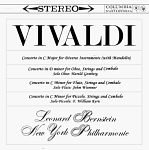 Concerto for Diverse Instruments with Mandolin (The Bernstein recording) Concerto for Diverse Instruments with Mandolin (The Bernstein recording) |
|
Awakened me to "art music."* This recording remains unique in that it was ahead of the
‘authentic performance practice’ movement. Bernstein instinctively got it right and literally had to retrain some of the world’s best solo instrumentalists to perform this
way. This album caused a sensation - no one had ever heard the New York Philharmonic play this way before! Of course some thought Lenny finally had gone completely
crackers. The pure joy of these performances is captivating.
(Excerpts from 1st Mov. - Lenny is playing the harpsichord.) |
|
|
|
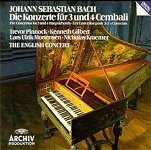 Concerto Concerto
for 3 Harpsichords and Orchestra |
|
Inspired me to build my own harpsichord. Like all of Bach's
keyboard concertos, it was a transcription - this time of Vivaldi's Concerto for 3 Violins & Orchestra. Listen to the Vivaldi first, then the Bach and prepare to
be amazed. Vivaldi never understood the richness of his own material.
|
|
|
|
 St. Matthew Passion St. Matthew Passion |
|
Many argue that Bach's ‘b minor mass’ is his greatest composition, but for me, his ‘St. Matthew
Passion’ works at more levels. Aside from the dramatic representation - it is the presence of mathematical relationships, symbolism, architecture and artistic double
entendres that provide a wealth of extra-musical joy. (See note below on interpretations.)
(Album excerpt: Opening + Lightning & Thunder.)
|
|
|
|
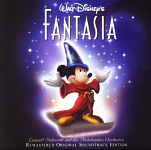 Fantasia Fantasia |
|
Ok - its a film, but the music was seminal to its creation; it is one of the best examples of a
creative artistic cross-influence in history. I first saw Fantasia at McCarter Theatre in Princeton in 1965. When I walked in, there was a blue haze - a cloud layer
about 20 feet over my head. It was the first time I smelled marijuana. (I’m surprised I didn’t get high from the voluminous clouds.) During the opening
"movement," Bach's Toccata and Fugue in d minor, when the timpani began to "glow" there were audible "whoa!"s and "wows" from the
crowd. And when those violin bows took off and soared into the air and began to dance - well... (Oh...wait, ... maybe breathing that cloudy air....) |
|
|
|
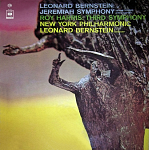 Symphony Symphony
No. 3 |
|
The was the first piece of music that frustrated me because I didn't understand it. I had to
listen to it half a dozen times before I understood it. Then I literally wore out 3 recordings. So immersed in this work was I, that to this day, without having looked at
the score for more than two decades, I have every confidence that I could step up to the podium, with no preparation, and conduct all of its changing meter and polyrhythms
and incorporate the "Bernstein cut" without difficulty. The Bernstein recording is the unchallenged definitive performance. Rich, warm melodies, exciting
rhythms, splashy - America’s Best Symphony. |
|
|
|
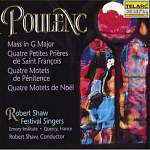 Everything he ever wrote, but especially the two sets of seasonal motets. Everything he ever wrote, but especially the two sets of seasonal motets. |
|
Poulenc's understanding of the human voice was more subtle, more complete and more suited to its
nature than those of Verdi or Händel - who were the other two masters of writing for it. I am incapable of finding words to sufficiently describe how superlative are the
Lenten Motets. THIS is soul enriching music! “Vinea mea electa” makes me instantly weep. Singing these under Robert Page’s superb fluid direction is something I will
remember for all my days on Earth. And likely beyond.
|
|
|
|
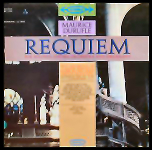 Requiem Requiem |
|
Its as if these ancient monk melodies had to wait hundreds of years for a composer whose musical
language was appropriate for harmonization. No composer preceding Duruflé could have set these melodies so poignantly. Forget the Faure; it doesn't even come close.
This is the setting God listens to.
|
|
|
|
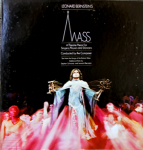 MASS - MASS -
A Theatre Piece |
|
I lay on the bed soaked with sweat and limp after the first hearing. When I heard it live at
the Metropolitan Opera House, I had to be helped to the subway - so affecting was this piece on me. Yet, I somehow wonder if I am the only one who gets it.
|
|
|
|
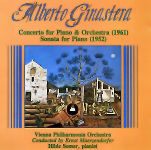 Sonata for Sonata for
Piano |
|
The perfect blend of romanticism and avante garde styles.
And the most fun piece to play. Tough as nails!
|
|
|
|
|
My favorite meter in all its flavors: 3+2, 2+3, 4+1 and the ultimately delicious, pure 5. |
|
|
|
|
|
|
Consider: Original versions vs. current recordings: Many of these are available as reissues. Here’s what is worth pursuing:
Vivaldi: Diverse Concertos. Mostly reissued but spread over 2 discs. Newer interpretations tend to be drier. These are best. Inexpensive, worth getting.
Bach: Concertos for 3 & 4 Harpsichords
. Reissued and worth getting. In my youth, I preferred the “in your face” Ristenpart recording; its very appealing, but Pinnock makes the magic of the individual lines clearer. It doesn’t match the
driven energy of the Ristenpart, but it renders at a higher level.
Bach: St. Matthew. Interpretive minefield. Tough choice between vocal sound and style. Rule 1: Stay away from Romantic conductors
(mostly anything before 1980.) Anyone who conducts the opening like a funeral dirge (von Karajan et al) doesn’t understand the piece!!! Herreweghe is the most listenable of the current versions; he
gets high marks for deeply thoughtful, reasoned style and musicality. The vocal style, however, sometimes bothers me; other times it really works. Its worth getting. (I would rather be bothered by a vocal
style than listen to a performance by a conductor who doesn’t understand the piece!) I am not aware of any definitive recording as of 2009. Please understand: The “pure tone” vocal style school is annoying
bull!
Fantasia: Get the restored DVD with original stereo soundtrack. Stokowski invented stereophonic sound. (He did!!)
Harris Sym. 3:
The original Bernstein / New York Philharmonic on Columbia/CBS/Sony has been reissued. Don’t even bother with any other recordings. - EVER. (Unless I do it. - OK, still choose Bernstein.) Avoid the mid and late life Bernstein on DGG and other labels. Disasters.
Poulenc Choral Works:
Choice is a balance between style and vocal sound. Shaw is the best compromise. I have never heard good vocal sound from a French choir, but nobody understands the style better. Reluctantly, stick with Shaw for now.
Duruflé: Requiem.
The hard-to-find original has been reissued on CD.
See note above about French choirs. (The orchestra also has issues!) The composer conducts in the church where it was written. Try to listen before purchasing. You may find the original lacking, even in interpretation (surprise)!
Bernstein: Mass. This is not a composition for everyone. If you want Bernstein choral music, stick with Chichester Psalms. But NOT recorded by choirs from England! (How can a vocal/choral concept
be so lovely and so very wrong at the same time?!) The original has been reissued and has authentic, historical value. There are two other recorded versions by Bernstein proteges... but - You’re on your own
on this.
Ginastera: Piano Sonata:
The Hilde Somer is a classic. Once I understood what she was doing, I both admired her and developed issues with her interpretation. The 3rd mov. is perfection. The 4th mov. bombs. She doesn’t get it. But kudos overall. Another piece I want to record!
One more: Hanson: Symphony No. 2 -
Its not listed above because it doesn’t qualify as changing me in any way, but this work, the Gerard Schwarz/Seattle Sym. recording belongs in every library. Buy it now. (Hanson’s own recording has been reissued and has merit but doesn’t compare.) This is a stunning piece. It would be Americas Best Symphony if it weren’t so European in style. Powerful performance. Repeat: Buy it now. (Conducting this piece, balancing all those wonderful inner melodies, sumptuous harmony and “moments”, was one of the great joys of my life.)
|
|
|
|
|
_________
* Art Music
- Teaching at the University of Scranton in the 80s, I was searching for more accurate terminology to describe what is generally referred to as “Classical Music.” The term “serious” music wouldn’t work because composers of “Popular” music are certainly serious about their work, too. And what term would one use to describe “Classical” music that is “popular”? Further, if music from the Classical era is “Classical,” then what is music from the Romantic era - Romantical? Baroque era would be, what...Baroqual? The answer seemed obvious to me: I gave a simple definition to my students: There are two types of music:
Temporal and Art. Temporal music is “of a time;” It is faddish and has little depth or development of its elements. It’s life span is short - Temporal music is temporary. Art music is
characterized by elements whose nature is such that relationships can be developed at multiple levels. Because of the quality of the elements and the manner in which those elements relate to one another, Art music
displays relationships within a complex architecture, a structure that enables it to last through generations. It attains the longevity which civilization associates with works of art. By definition, “Art”
music is improved terminology. Now, if I could just convince the rest of the world how moronic it is to refer to music from the Romantic or Baroque eras as being Classical... |
|
|
Contents and WebDesign © Copyright 2009 by
NYConsultants
. All Rights Reserved.
|
|
|
|

